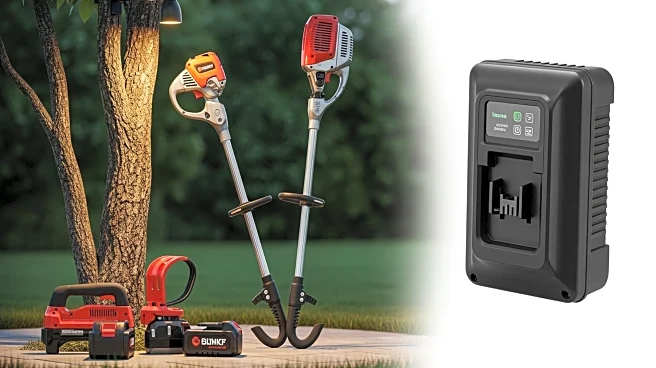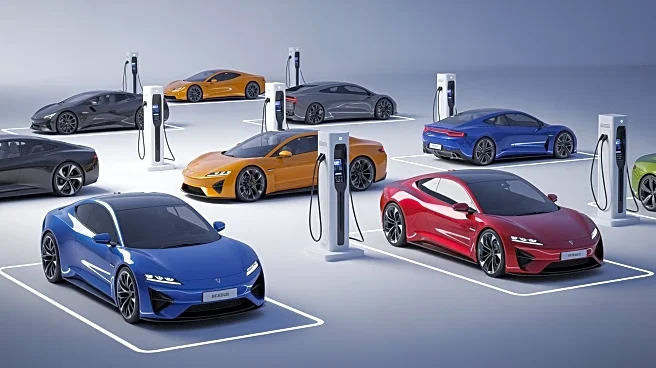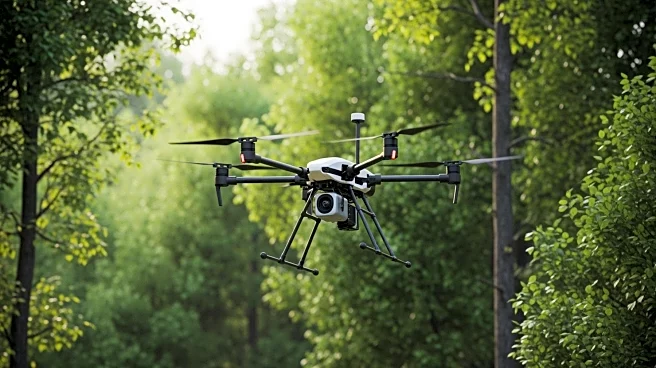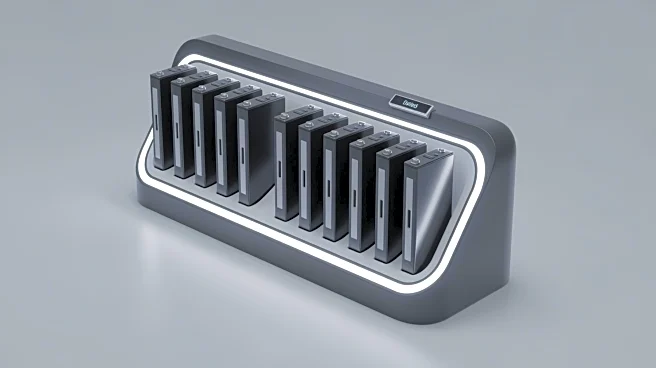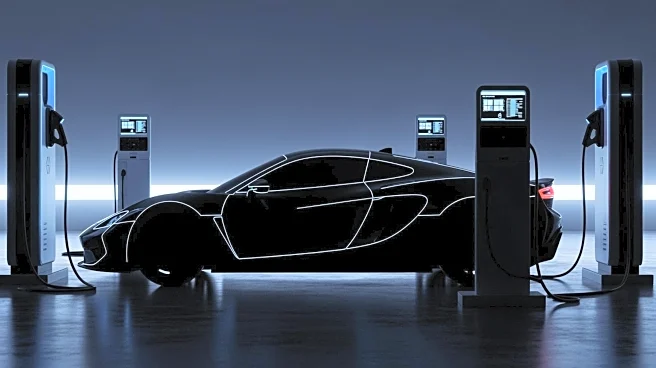What's Happening?
Makita has launched a new battery charging unit, the BCC01, designed to enhance productivity in tree-care operations. The unit is compatible with Makpac carriers, Makita's interlocking storage system, and features eight charging ports that allow simultaneous
charging of up to four batteries. The smart 'Switch Change' function automatically cycles to the remaining batteries once the first set is fully charged, minimizing workflow disruption. The BCC01 supports XGT 40V batteries and, with an optional adapter, LXT 18V batteries. It can charge four 2.0Ah XGT batteries in 75 minutes, and eight in 150 minutes, offering a significant improvement in charging efficiency.
Why It's Important?
The introduction of the BCC01 charging unit is significant for the forestry and tree-care industry, as it addresses the need for efficient battery management in field operations. By reducing downtime associated with battery charging, the unit enhances productivity and operational efficiency. This development is particularly beneficial for professionals who rely on battery-powered tools for tree maintenance and care, allowing them to maintain a continuous workflow. The compatibility with multiple battery types also provides flexibility and cost-effectiveness, as users can utilize existing battery inventories without needing to invest in new systems.
What's Next?
The launch of the BCC01 may prompt other manufacturers to innovate similar solutions, potentially leading to advancements in battery technology and charging systems. As the demand for sustainable and efficient tools grows, companies might explore further enhancements in battery life and charging speed. Additionally, the forestry industry could see increased adoption of battery-powered equipment, reducing reliance on fossil fuels and contributing to environmental sustainability.
Beyond the Headlines
The BCC01 charging unit reflects a broader trend towards electrification and sustainability in the forestry sector. As industries increasingly prioritize eco-friendly practices, the shift to battery-powered tools represents a commitment to reducing carbon footprints. This move aligns with global efforts to combat climate change and promote sustainable resource management, highlighting the role of technology in achieving environmental goals.
